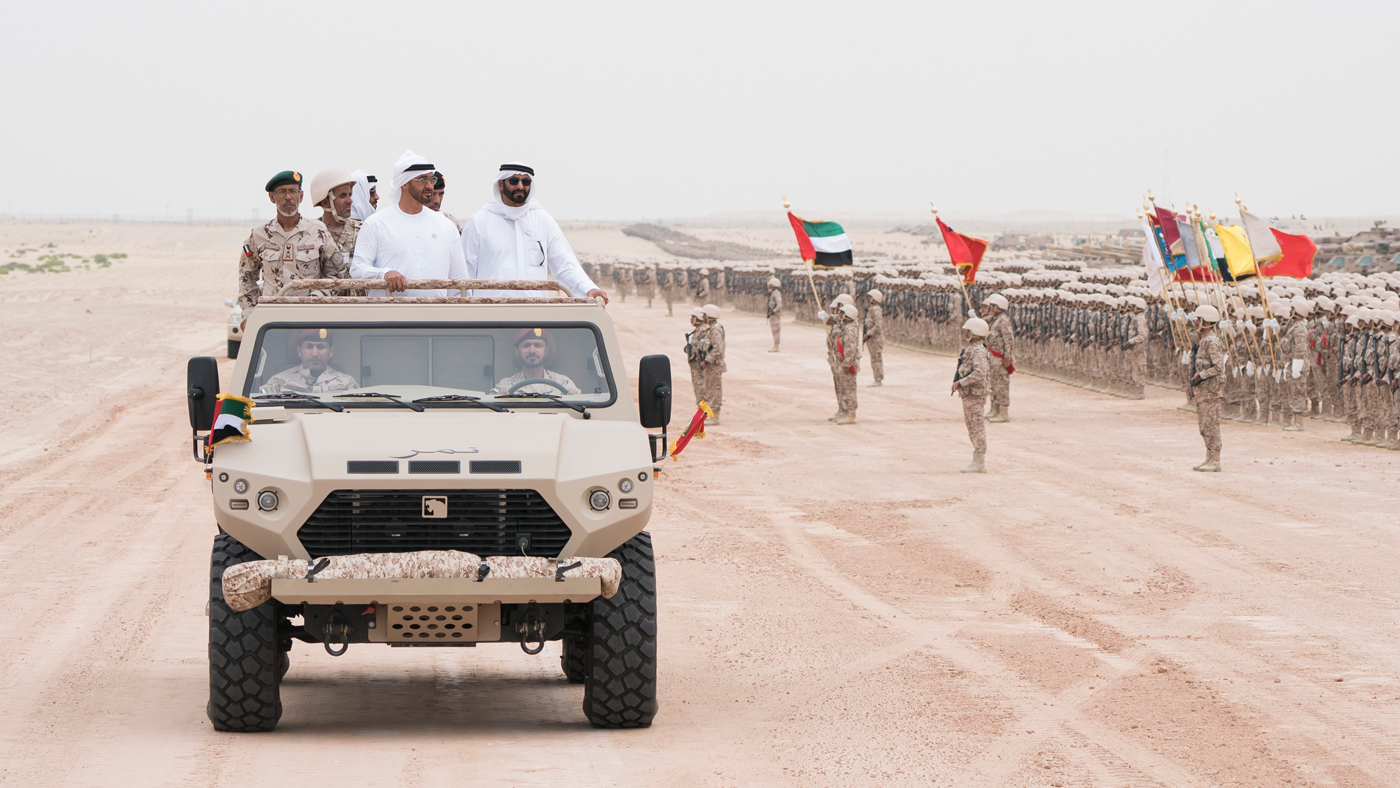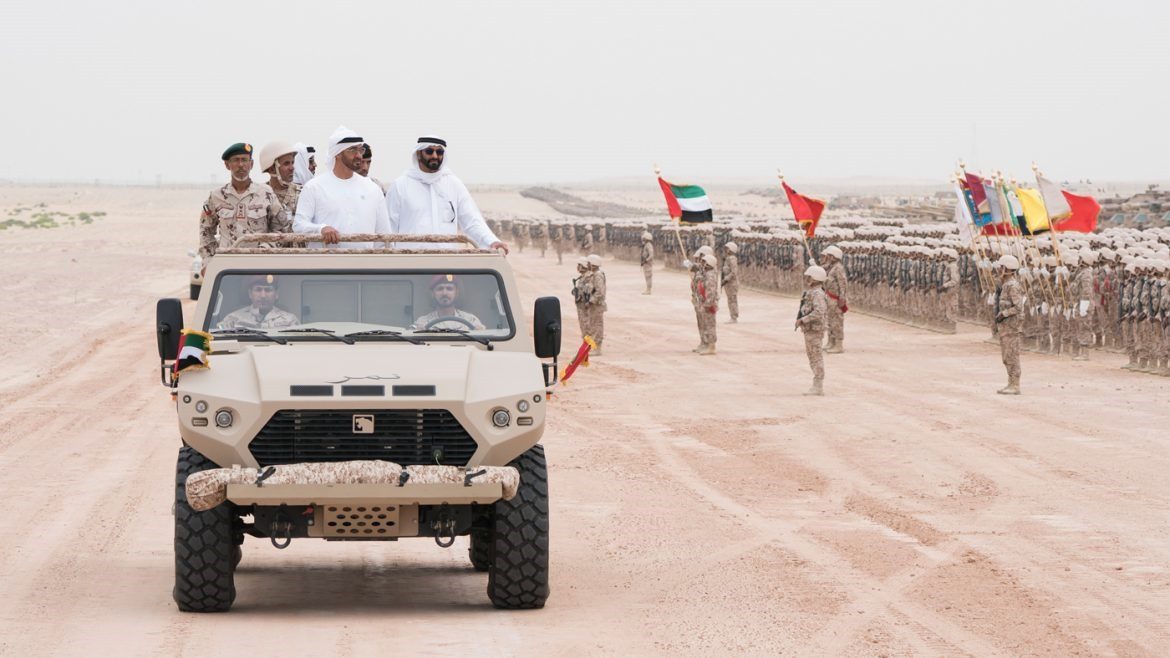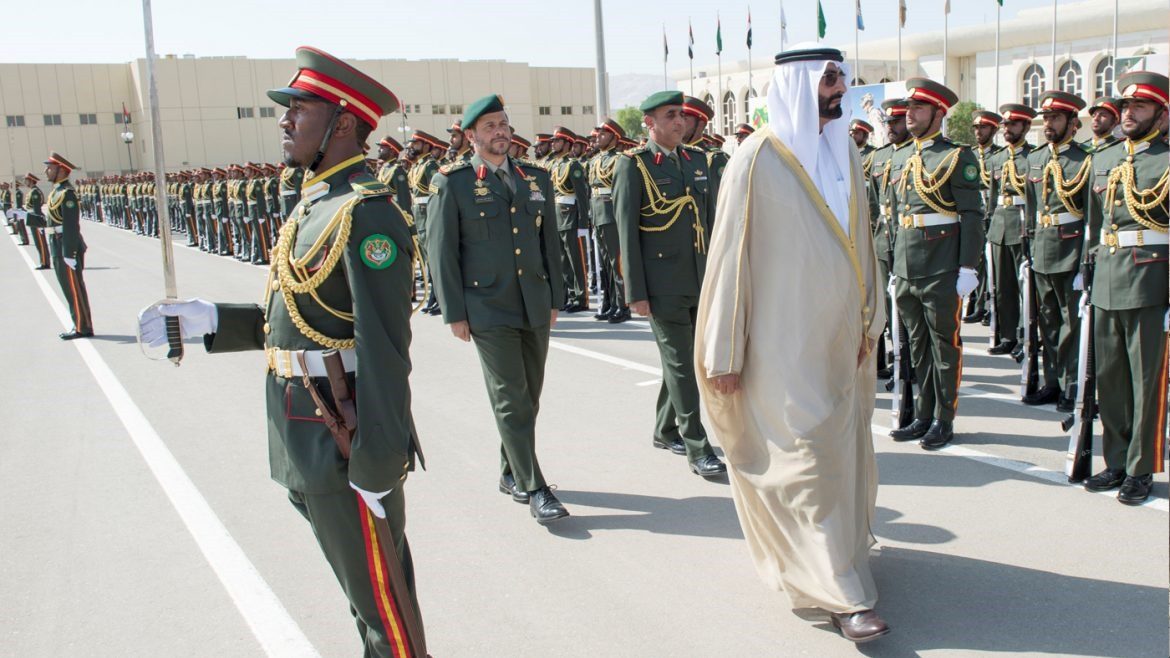In July 2023, the French Parliament approved the new (Military Programming) law, marking a significant increase in the Defence Ministry’s budget for 2024-2030, reaching €413 billion. The budget will see incremental additions, starting with €3.1 billion in 2024 and an additional €3 billion each year until 2027. From 2028 onwards, the French Defence Ministry is set to receive an extra €4.3 billion annually.
With a €13 billion increase, this funding aims to enhance the protection of French territory, foster operational collaboration with allies, and improve rapid intervention capabilities, particularly within the ground forces.
The new military programming law is grounded in the logic of military transformation, providing the French army with the necessary means to address the deterioration of the strategic context, the return of war to Europe’s doorstep, and the acceleration of technological disruptions.
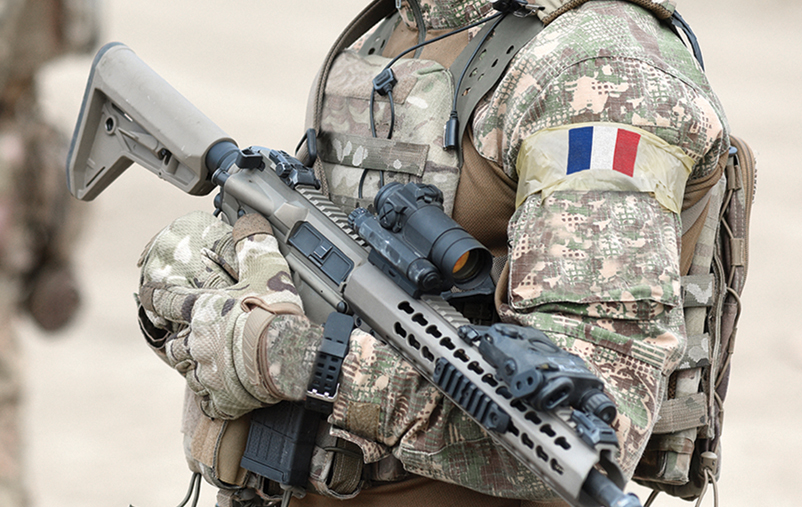
This law outlines France’s defence policy for the coming years across five main axes:
- Adapting French defence strategy to current and future threats.
- Strengthening the foundations of French defence.
- Adapting military tools to evolving threats.
- Achieving technological leaps in the defence sector.
- Cementing the ethical image of the French army.
This all aims to enable the French army to deploy its forces globally and develop forces capable of responding to aggression against France and its interests and confronting various threats, including natural disasters, violators of international law, and those manipulating information. This study aims to analyze the implications of the new military programming law on ground forces.
The Numbers and Status of French Ground Forces: The new military programming law will lead to a reduction of approximately 10,000 ground forces for the following reasons:
- Soldiers will undergo training for new tasks, including robotics, unmanned aerial vehicle control, electronic warfare, and internet control within each battalion.
- The law stipulates the development of a French type of remotely operated ammunition by 2030 to keep up with advancements in missile systems, which will lead to a decrease in infantry numbers.
- Despite the historical importance of nuclear weapons in the French defence strategy, previous governments did little to maintain and improve nuclear weapons and their carriers. However, the new law allocates around €54 billion for this purpose, emphasizing the importance of deterrence over traditional ground combat strength.
- The gradual shift of battlefields from land to space, the sea floor, information warfare, and cyberspace prompted the new law to prioritize control over these new conflict domains.
French Ground Forces Overseas: In light of the increasing prevalence of hybrid threats, the negative impacts of climate change, and challenges to international law, the new military programming law recognizes the necessity for France to reaffirm its defensive capabilities and sovereignty over its overseas territories.
This becomes especially crucial as France’s adversaries overtly showcase their military capabilities in proximity to these territories. Therefore, reinforcing French sovereign forces in these territories is a priority within the new law. To empower French forces stationed abroad to carry out sovereignty-related tasks, protect populations, and solidify alliances, it is imperative to increase their numbers, continuously modernize their equipment and invest in military infrastructure. Thus this law aims to reinforce the French ground forces overseas with an additional 619 combat soldiers, increase operational reserves, implement infrastructure updates costing over €800 million and recruit 800 personnel to upgrade the military infrastructure for French overseas territories and provinces.
French Ground Forces Intelligence: Whether at the political, military, or tactical levels, access to information is vital for the armed forces for planning, executing operations, and decision-making.
Thus, 8000 specialists from all branches of the French armed forces, including ground forces, play a crucial role in collecting, sorting, analyzing, and interpreting millions of data points disseminated globally every day.
Military intelligence, including that of the ground forces, will benefit from the increased budget under the new law. This will enable various intelligence branches to recruit thousands of employees, allocate additional resources for new surveillance satellites, strengthen cybersecurity, acquire new servers, and utilize artificial intelligence to expedite data processing, ensuring operational superiority over adversaries.
The new law ensures that the budget for military intelligence doubles by 2030, positively impacting the intelligence capabilities of ground forces.
In terms of employment, the Military Programming Law 2024-2030 is set to create around 600 job opportunities during this period while retaining current employees. To meet these challenges, a substantial budget of €5 billion is allocated to the intelligence component in the military programming law, including elements of ground forces intelligence.
The Traditional Equipment of French Ground Forces: This new law emphasizes the modernization of the French army, particularly regarding nuclear deterrence and improving the conditions of military personnel
To that end, approximately €10 billion will be allocated along with updates to equipment and increased investments in cybersecurity, space, and maritime capabilities.
However, traditional heavy equipment, such as tanks and infantry fighting vehicles will be reduced.
For instance, by 2030, the French army will receive 2,300 armoured vehicles of the Scorpion model, which is 30% less than initially planned.
The Air Force will receive 137 Rafale fighters instead of 185, and the Navy will be equipped with 3 frigates instead of the planned 5. These adjustments reflect the focus on technological advancements and a strategic shift in defence priorities outlined in the Military Programming Law.

Implications for Reservists: Given the current context, the importance of the professional army model established since the mid-1990s is acknowledged. However, in light of current threats, the new military programming law recognises the need to strengthen the operational reserve forces of the French army as the glue that binds the nation and the army.
This involves increasing the number of reserve forces to achieve an operational reserve ratio of one operational reservist for every two soldiers by 2035.
Reservists will be trained to perform tasks similar to their active-duty counterparts, enabling them to be significant contributors to defence and security issues.
Consequently, the number of reservists will rise from approximately 40,000 to about 80,000. The naval, air, ground forces, and intelligence units plan to recruit former soldiers and civilians, with a particular focus on individuals with rare skills, such as computer scientists, linguists, and technicians. The number of reservists in overseas territories is expected to exceed double the current number, reaching over 4,200 by 2030.
Technological Evolution in Ground Forces: The new military programming law recognizes the increasing pace of technological advancements, posing a threat to national independence. Consequently, France is driven to renew its operational capabilities and develop its digital verification tools independently, reducing its dependence on allies.
The law seeks to achieve technological leaps in the defence sector, positively impacting the BattleLab Terre project, initiated in 2018. This project aims to enhance collaboration between various stakeholders in technological innovation, including ministries, manufacturers, startups, research centres, universities, etc, to anticipate and address future challenges.
The new military programming law allocates a budget of €10 billion to support innovation, focusing on replacing humans with robots for specific ground tasks.
This aims to relieve humans of repetitive, hazardous tasks and increase efficiency, which the new law recognises as a fundamental approach for achieving better synergy between human and automated systems in ground forces.
The new military programming law will enable the VULCAIN project to achieve its primary goal: ensuring the French army has access to the chosen automated systems to maintain operational superiority on the battlefield. The program’s motto is :(We can automate everything, but what do we really need?) The law responds by emphasizing that France possesses highly comprehensive defence capabilities, prompting the evaluation of whether robot contributions will raise doubts about some existing systems or complement them. In other words, are robots a revolution or just an evolution?
Services Provided to Ground Forces: In the face of the resurgence of warfare in Europe, the new military programming law emphasizes the need for France to adopt a defence policy that goes beyond the armed forces, involving civilian society in protecting the nation, through the following key aspects:
- Increasing operational reserves
- Improving living conditions for soldiers and their families
- Updating healthcare services for military personnel and their families
- Contributing to strengthening the bond between the French nation and its army
To achieve these goals, the new programming law allocates at least €750 million for building new homes, supporting parents, providing better compensation for absences, assisting soldier movements, and enhancing the daily lives of military families. This aligns with one of the law’s primary objectives: solidifying the ethical image of the French army.
Operational Excellence for the French Ground Forces: The new law aims to maintain a well-trained and combat-ready French ground force capable of participating in all conflicts, including major confrontations.
The law outlines several strategies to achieve this goal:
Readiness for Future Challenges
Establishing well-prepared Ground forces to face future challenges through the following initiatives and mechanisms such as the ATHOS Project, A comprehensive plan to improve the care of injured soldiers along with Investing in youth, establishing a new technical school, renewing reserve forces and strengthening the military community, to enhance the ethical image of the French army. Preparedness for High-Intensity Future Warfare (Project Titan)
The Titan project is designed to create a high-capacity information network set to be operational after 2040, altering the rules of engagement based on the concept of (synchronization strategy), a term used by Colonel Arnaud Goujon in the 31st May conference on land weapons organized by the French Strategic Research Institute.
The project seeks to expand the (combat cloud) for ground forces, replacing the €10 billion SCORPION program, which aimed to update medium-sized armoured vehicles, especially the multi-mission carrier (Griffon),the combat and reconnaissance vehicle Jaguar, the light multi-mission vehicle (Serval), and thus establish a command and control network based on the Atos SICS battle management system and Thales Contact software-defined radio technology. The Titan program ensures future ground-air combat and informational collaboration, facilitating real-time information sharing among all units to improve operational superiority.
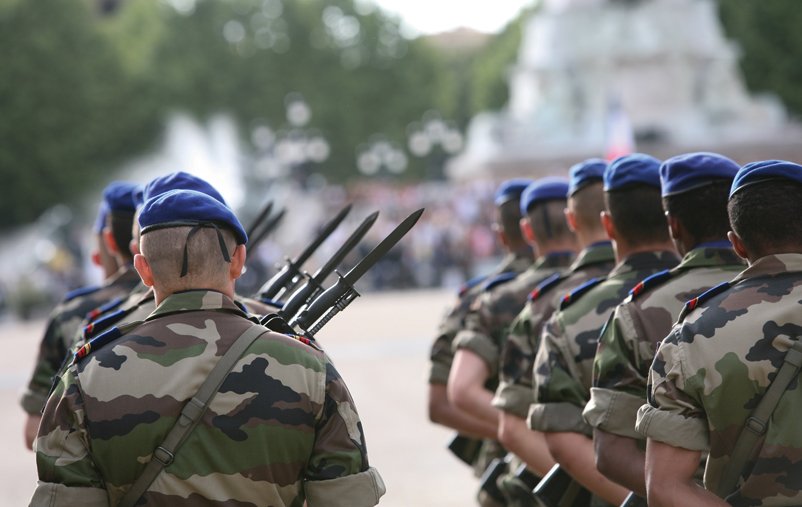
Comprehensive Training
This entails the integration of the maximum number of individuals in military training, preparation, rehabilitation, and skill refinement exercises, such as the ORION 2023 training.
Operational Efficiency for Ground Forces
This is done through the following steps:
- Streamlining the system and encouraging individuals to take on more responsibilities.
- Integration with joint support systems.
- Emphasis on digital technology.
- Quick and proficient operational response.
Conclusion
Critics argue that the new military programming law may not lead France to follow the paths of Poland or even Germany, which planned to increase the size of its army and purchase dozens of tanks and fighter jets. Instead, the French army plans to maintain the size of its army until 2030.
Some see the law as a paradox, allowing for a historic budget on one side but fewer equipment and human resources on the other, which means that the law is expected to result in a more modernized army, but with limited manpower and equipment.
Others claim that the law makes the French army do almost everything but not enough to be fully independent. Therefore, its ability to wage a large-scale and fierce war without its allies in the North Atlantic Treaty Organization (NATO), may be reduced.
Others argue that given the current geopolitical and economic context of France and Europe, which is the most important factor, France may not have been able to do better.
» By: Professor Wael Saleh (Expert at Trends Research & Advisory Center)





